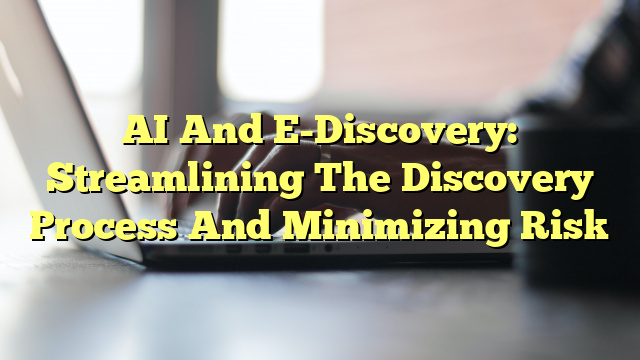Table of Contents
- Benefits of AI in eDiscovery
- The Discovery Process and eDiscovery
- AI in eDiscovery
- The eDiscovery Process
Benefits of AI in eDiscovery
AI, or Artificial Intelligence, has revolutionized many industries, and eDiscovery is no exception. By leveraging AI technologies, the eDiscovery process can be streamlined and made more efficient, while also minimizing the risk of human error. Some of the key benefits of AI in eDiscovery include:
- Improved speed and accuracy in document review
- Reduced costs by automating repetitive tasks
- Enhanced search capabilities to find relevant information
- Identification of patterns and trends in large datasets
The Discovery Process and eDiscovery
The discovery process is a crucial part of legal proceedings, where parties involved exchange information and evidence related to a case. This process is governed by rules and regulations to ensure fairness and transparency. eDiscovery, or electronic discovery, refers to the identification, collection, and analysis of electronically stored information (ESI) as part of the discovery process.
eDiscovery involves the use of technology to search, filter, and analyze large volumes of data, including emails, documents, databases, and other electronic files. It allows legal teams to efficiently review and produce relevant information for litigation or investigations.
AI in eDiscovery
AI technologies play a crucial role in eDiscovery, enabling more efficient and accurate analysis of electronic data. Some of the ways AI is used in eDiscovery include:
- Document Review: AI-powered algorithms can analyze and categorize documents, reducing the time and effort required for manual review. This helps identify relevant documents and prioritize them for further analysis.
- Natural Language Processing (NLP): NLP allows AI systems to understand and interpret human language, making it easier to search and analyze unstructured data, such as emails or chat logs.
- Machine Learning: Machine learning algorithms can be trained to recognize patterns and make predictions based on historical data. This can be used to identify relevant documents, predict case outcomes, or flag potential risks.
The eDiscovery Process
The eDiscovery process typically involves the following steps:
-
- Identification: Identifying potential sources of relevant ESI, such as email servers, document repositories, or cloud storage.
- Preservation: Taking necessary steps to preserve the integrity and authenticity of the collected data, ensuring it remains unaltered.
- Collection: Gathering the identified ESI in a forensically sound manner, ensuring the data is not tampered with or modified.
- Processing: Converting the collected data into a format that can be easily searched and analyzed, such as text or metadata extraction.
<li

